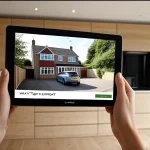Current Landscape of Sustainable Practices in UK Real Estate
Sustainable development in the UK property sector has increasingly gained traction as both environmental responsibility and market advantage become priorities. Leading green building practices focus on energy efficiency, water conservation, and use of sustainable materials. The UK real estate market prominently adopts certifications like BREEAM (Building Research Establishment Environmental Assessment Method) and LEED (Leadership in Energy and Environmental Design), which set rigorous standards for reducing environmental impact and improving building performance.
Residential and commercial properties demonstrate different adoption rates and approaches. Residential developments often prioritise affordable energy-efficient measures and renewable energy integration, while commercial buildings tend to adopt advanced sustainability protocols aligned with corporate social responsibility goals. This sector also emphasizes innovations such as smart building systems and carbon footprint reduction technologies.
Also to discover : How Does Brexit Impact London’s Commercial Real Estate Future?
The widespread use of these standards in the UK property sector reflects a commitment to embedding sustainability into building design, construction, and operation. This ensures compliance with evolving regulations and meets growing consumer demand for eco-friendly living and working spaces, marking a transformative shift toward greener urban environments.
Current Landscape of Sustainable Practices in UK Real Estate
The UK property sector is increasingly embracing sustainable development to reduce environmental impact and meet growing regulatory demands. Central to this transformation are leading green building standards such as BREEAM and LEED. BREEAM, pioneering in the UK, evaluates factors like energy use, materials, and waste management, while LEED offers a global framework adopted selectively within commercial projects.
This might interest you : Maximising Profit in the UK Real Estate Market: What Are the Key Strategies?
Adoption varies across the sector. In residential properties, sustainable development prioritises energy efficiency features like improved insulation and low-carbon heating systems to meet government targets. Commercial buildings, on the other hand, often incorporate advanced technologies such as smart energy management and sustainable water use to optimise operational performance and reduce their carbon footprint.
These sustainable practices not only align with policy objectives but also enhance marketability and compliance for developers and investors. As green building awareness grows, the UK property sector continues to develop innovative solutions that address both urban living demands and environmental stewardship. This ongoing commitment solidifies the role of sustainable development as a cornerstone in reshaping the real estate landscape.
Environmental and Economic Impacts of Sustainability Initiatives
Understanding the environmental impact of sustainability initiatives in the UK real estate sector is vital. Leading measures aim squarely at energy efficiency and carbon footprint reduction, directly lowering operational carbon emissions in buildings. For example, implementing advanced heating systems and energy management technologies reduces energy consumption significantly, which translates into less fossil fuel use and cleaner air.
From an economic perspective, these initiatives offer tangible financial benefits. Developers and investors increasingly notice that properties with strong sustainability credentials tend to achieve higher rental yields and improved asset valuation. Occupants enjoy reduced utility costs, making green buildings more attractive and cost-effective over time.
Data confirms a positive correlation: better energy performance often leads to enhanced market value. This encourages more widespread adoption of environmental improvements despite initial investment concerns.
In summary, the balance of environmental and economic advantages makes sustainability initiatives a compelling proposition for the UK property sector. Integrating carbon reduction and energy-saving technologies not only meets regulatory and consumer demands but also fosters long-term profitability and resource efficiency.
Current Landscape of Sustainable Practices in UK Real Estate
Sustainable development in the UK property sector is primarily driven by rigorous green building standards like BREEAM and LEED. These certifications set clear targets to improve energy efficiency, reduce waste, and promote sustainable materials throughout a building’s lifecycle. BREEAM remains the most widely implemented standard in UK developments, evaluating energy use, water management, and environmental impact, while LEED is more prevalent in larger, commercially focused projects seeking global compliance.
Adoption patterns differ notably between residential and commercial properties. Residential developments emphasize affordable, scalable energy solutions such as improved insulation and integration of renewable energy sources to meet both consumer demand and government mandates. Meanwhile, commercial buildings often incorporate sophisticated smart systems that optimise energy consumption and water use, boosting both operational efficiency and reduced carbon footprints.
The UK property sector’s sustained focus on sustainable development reflects a balance between regulatory compliance and market-driven incentives. This ongoing commitment to sustainable practices is reshaping building design, construction, and management, positioning the UK as a leader in green building innovation and environmental stewardship.
Current Landscape of Sustainable Practices in UK Real Estate
Leading sustainable development in the UK property sector actively promotes energy-efficient design, resource conservation, and reduced environmental impact. Green building standards such as BREEAM and LEED continue to shape best practices by establishing clear performance benchmarks for projects across the country. BREEAM remains the dominant certification for the UK market, assessing materials, energy, water usage, and waste management. LEED, while less widespread domestically, influences commercial developments aiming for international recognition.
Adoption patterns differ between residential and commercial property sectors. Residential buildings often prioritise cost-effective energy-saving measures, such as improved insulation and solar panel integration, supporting affordable green living. Commercial properties typically pursue higher sustainability targets through smart building systems, advanced HVAC technology, and comprehensive waste reduction strategies to meet corporate ESG goals.
This nuanced application highlights how the UK property sector tailors sustainable development approaches to diverse market demands, encouraged by regulatory frameworks and evolving consumer expectations. Ultimately, these green building efforts reinforce the sector’s commitment to mitigating environmental impact while enhancing asset value and occupant well-being.
Current Landscape of Sustainable Practices in UK Real Estate
The UK property sector is steadily integrating sustainable development practices to address environmental and economic challenges. Central to these efforts are established green building certifications like BREEAM and LEED, which set measurable benchmarks for energy efficiency, waste reduction, and sustainable material use. BREEAM dominates residential and UK-centric projects, assessing factors such as water management and carbon emissions. LEED, recognized internationally, is more common in commercial ventures aiming for global standards.
Adoption diverges notably between residential and commercial properties. Residential buildings typically focus on practical, cost-effective technologies such as improved insulation, energy-saving heating systems, and solar panel installation. Meanwhile, commercial properties often pursue sophisticated, integrated green building solutions—including smart energy systems and real-time environmental monitoring—to support corporate sustainability goals.
This differentiation reflects the sector’s nuanced response to market demands and regulatory frameworks. The continued emphasis on green building practices helps ensure the UK property sector remains at the forefront of sustainable development, balancing environmental responsibility with operational effectiveness and long-term value creation.
Current Landscape of Sustainable Practices in UK Real Estate
The UK property sector is rapidly advancing in sustainable development, prioritising energy efficiency and environmental responsibility. Core to this shift are widely recognised green building standards, notably BREEAM and LEED certifications. BREEAM dominates UK projects, setting comprehensive benchmarks for energy use, water efficiency, and material sustainability. LEED, while less common, targets commercial developments aiming for international green recognition.
Residential properties concentrate on practical, affordable solutions such as improved insulation and solar panel installations, addressing both consumer demand and regulatory targets. In contrast, commercial real estate often integrates cutting-edge smart building technologies, advanced HVAC systems, and sustainable water management practices. These technologies enhance operational efficiency and reduce carbon footprints on a larger scale.
This sector-wide adoption emphasises how sustainable development adapts to market needs while fulfilling environmental goals. By aligning green building practices with specific residential and commercial requirements, the UK property sector strengthens its position as a leader in environmentally conscious urban development.
Current Landscape of Sustainable Practices in UK Real Estate
The UK property sector steadily advances sustainable development by integrating well-established green building standards, predominantly BREEAM and LEED. BREEAM leads domestically, providing comprehensive assessments of energy use, water efficiency, waste management, and environmental impact. LEED, while less common, influences larger commercial projects aiming for international recognition and benchmarking.
Adoption patterns vary significantly between residential and commercial properties. Residential developments frequently prioritise affordable, scalable energy-saving technologies such as enhanced insulation, low-carbon heating, and solar panel integration to meet policy goals and household budgets. Conversely, the commercial sector pursues robust sustainability measures including smart building management systems, advanced HVAC solutions, and real-time environmental performance monitoring—efforts aligned with corporate sustainability frameworks and investment appeal.
This diversity reflects the UK property sector’s nuanced response to market demands, regulatory incentives, and evolving environmental priorities. By catering to distinct needs, the sector fosters innovation and adoption across different building types, reinforcing sustainability as an integral part of property lifecycle management. The ongoing integration of green building practices fuels the UK’s leadership in environmental stewardship and sustainable urban development.
Current Landscape of Sustainable Practices in UK Real Estate
Sustainable development in the UK property sector is anchored by robust green building standards, chiefly BREEAM and LEED certifications. BREEAM remains the primary framework within the UK, rigorously assessing energy consumption, water management, material sustainability, and waste reduction, establishing clear benchmarks for projects to lower their environmental impacts. LEED complements this by addressing commercial developments with international ambitions, promoting equivalent sustainability goals on a global stage.
Residential properties predominantly adopt cost-effective energy-saving measures, such as enhanced insulation and solar panels, balancing consumer affordability with environmental responsibility. In contrast, commercial buildings often integrate sophisticated technologies—like smart energy management systems and advanced HVAC solutions—that maximise operational efficiency and significantly reduce carbon footprints.
This sector-specific approach reflects the diverse priorities within real estate, as the UK property sector actively tailors sustainable development to meet varied regulatory requirements and market demands. Together, these green building practices reinforce the commitment to environmental stewardship, ensuring sustained progress in reducing buildings’ ecological impact across the residential and commercial landscapes.


